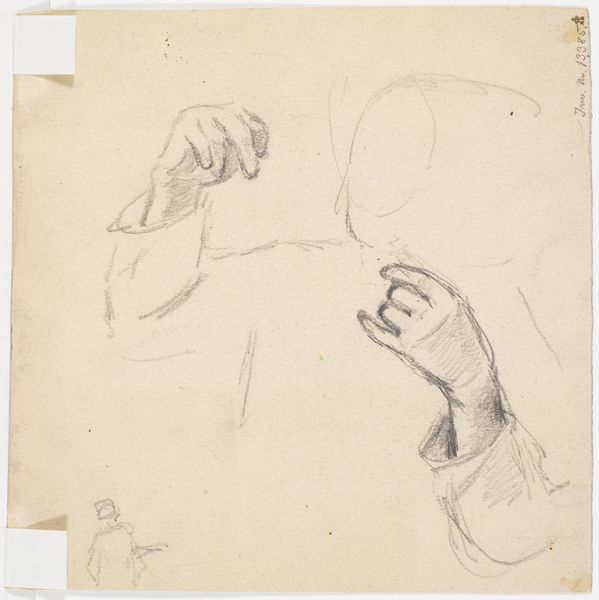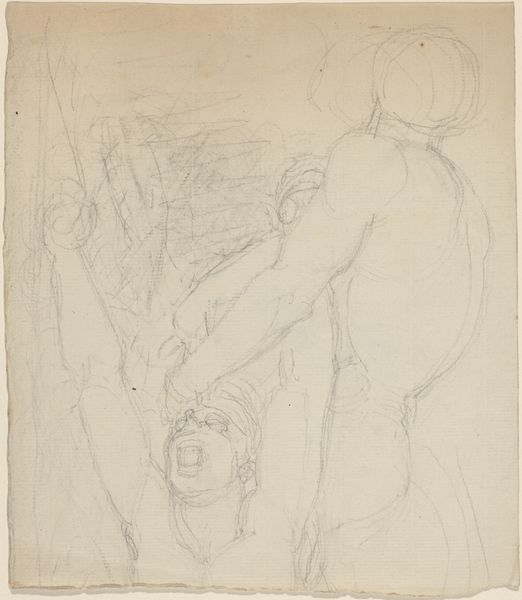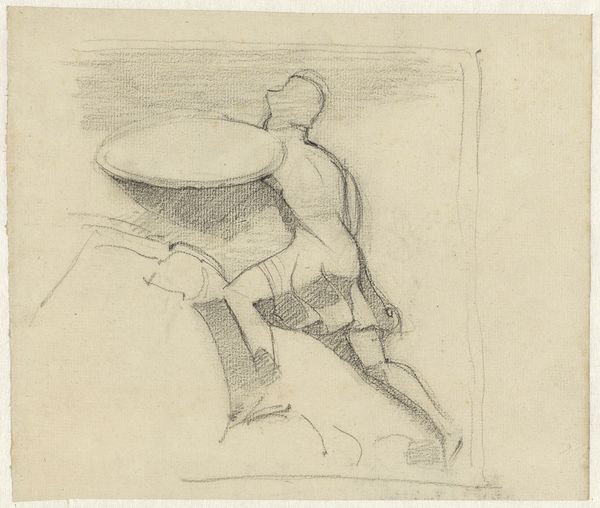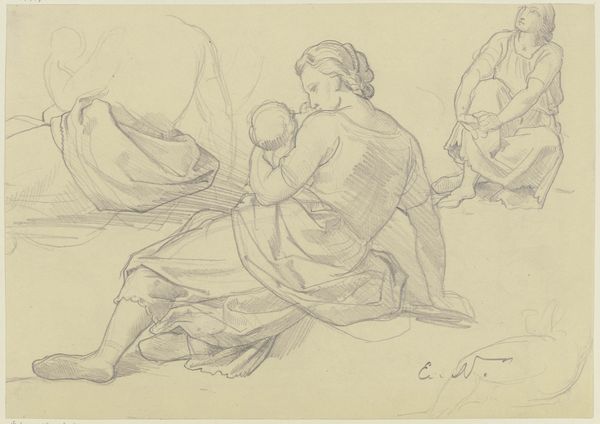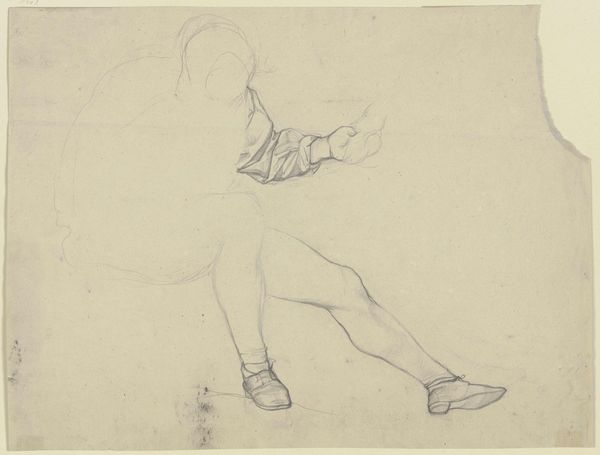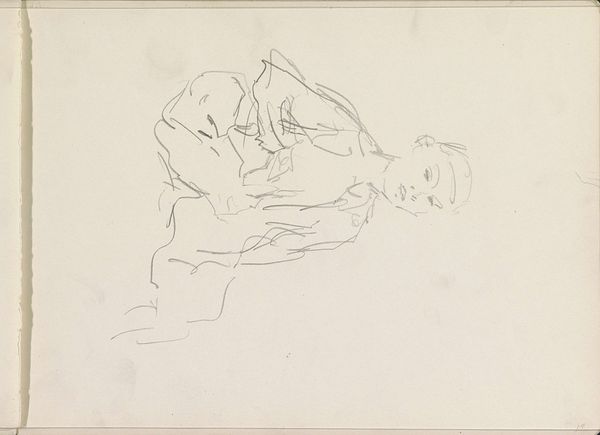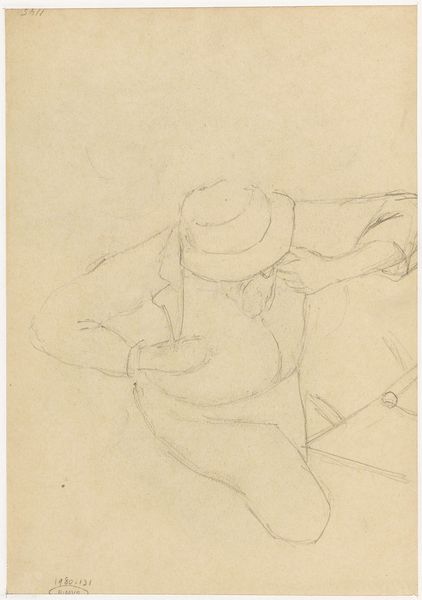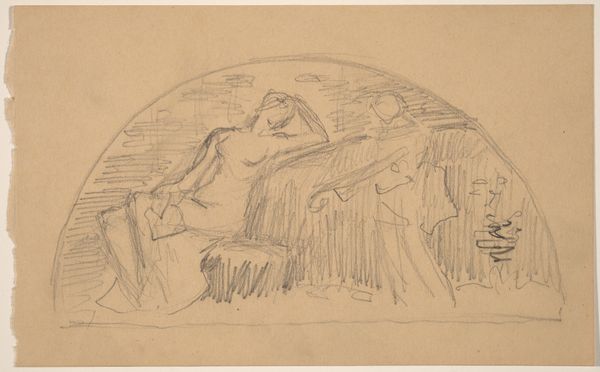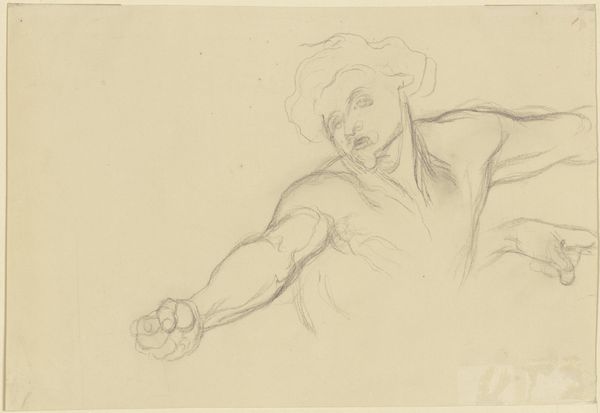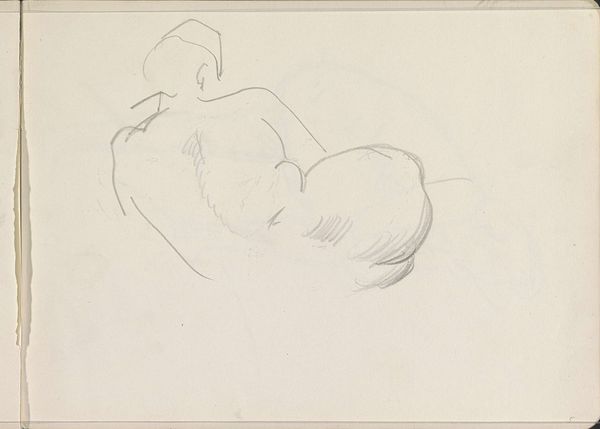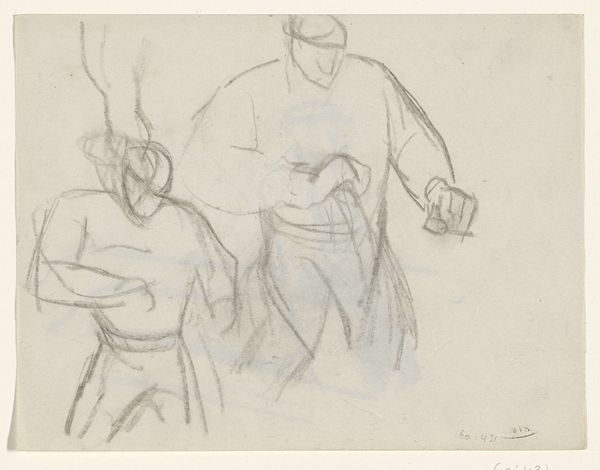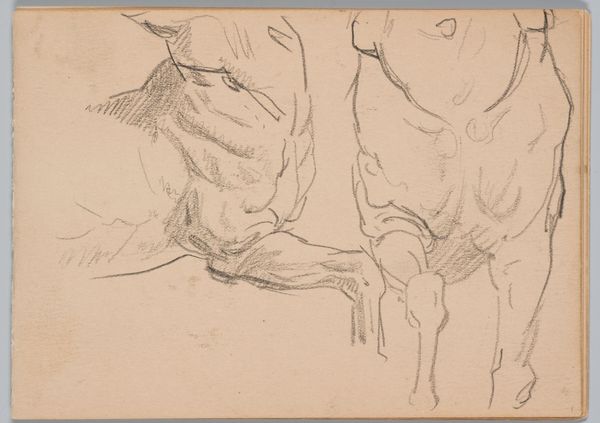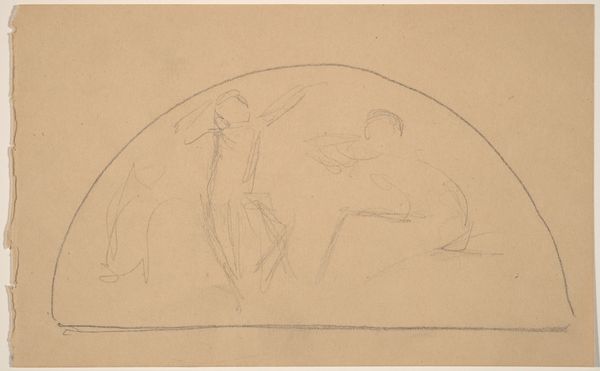
Half-length Study of a Woman's Right Arm Extended c. 19th century
0:00
0:00
drawing, pencil
#
portrait
#
drawing
#
figuration
#
pencil drawing
#
pencil
#
portrait drawing
#
academic-art
#
nude
Dimensions: 6 9/16 x 10 7/16 in. (16.67 x 26.51 cm)
Copyright: Public Domain
Curator: Before us is Alfred Stevens' "Half-length Study of a Woman's Right Arm Extended," a pencil drawing likely created sometime in the 19th century, now residing at the Minneapolis Institute of Art. Editor: My first impression is one of quiet contemplation, almost a muted intensity. The limited palette emphasizes the subtle modulations of light and shadow on the form. Curator: It's intriguing how Stevens uses the pencil to suggest texture, creating a dialogue between the smoothness of skin and the rough grain of the paper itself. I think his choice of materials and rendering truly invite us to contemplate academic artistic processes. Editor: I agree, but the fragmented nature of the study is really striking. We are presented with a mere portion of the body. It removes the figure from a context where the viewer might easily essentialize gender roles. Do you see that ghost-like figure within the sketched box behind her? That addition underscores how images and representation themselves were constantly being assessed by Stevens. Curator: The repetition is really about his practice. Here, in these reproductive lines, he renders studies in the studio, highlighting a focus on the hand as a mechanism central to art production, a critical tool. It removes ideas about inspiration, perhaps. Editor: Right. Thinking about women’s labor both within and outside the art world is inevitable here for me. The absence of contextual detail shifts our focus. Was she an artist or a model in her own right? How would we even find such details now, when female creative production remains obscured in our art institutions and art history itself? Curator: Looking closely, I notice the delicate shading across the shoulders, and the precision he uses to convey muscle definition; such close looking and exact measurements are what makes this artwork an academic work, I believe. Editor: Yet, this seemingly objective "study" reflects culturally contingent beauty standards in its aesthetic choices. It demands questioning how we perceive and internalize idealized forms. The pencil itself suggests accessibility to all; the ability for all artists to investigate these forms if afforded education and means. Curator: It’s compelling to think about how such academic works continue to inform contemporary drawing. Editor: Precisely, tracing those legacies while challenging dominant narratives is vital. Looking carefully is a deeply political and revolutionary gesture, I feel, since the images presented by academic tradition continue to shape our perceptions of our very selves.
Comments
No comments
Be the first to comment and join the conversation on the ultimate creative platform.
